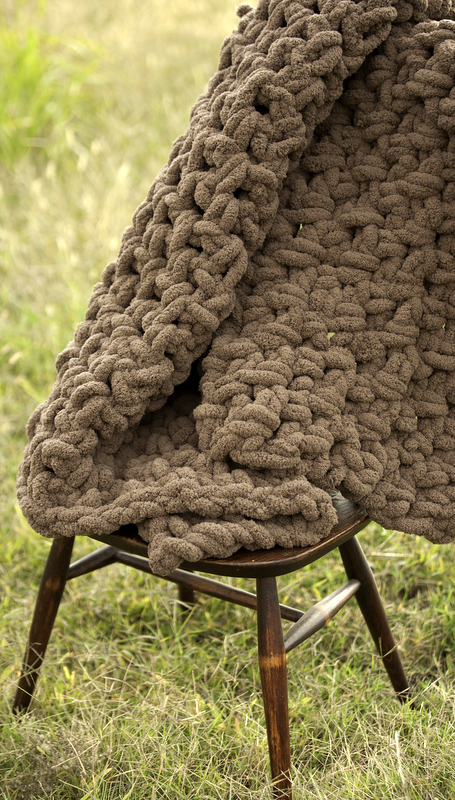
Last week, we talked more about color theory in yarn. Then it hit me: we haven’t even touched on the neutrals! So, here we have Even More About Color Theory in Yarn: The neutrals. Just saying that brings to mind minimalist apartments full of chrome, glass, and black and white decor; sophistication, Art Deco, and lovely Hollywood glamour. It also brings to mind the 70s, with their overwhelming browns and oranges.
Neutral color scheme afghans work in nearly all decor schemes. Think of the lovely off white fluffy afghan draped across the bed in all the HGTV shows. It is usually black, white, a soft brown or maybe even gray.

Color Theory in Yarn: The Neutrals
Neutral color schemes can be so peaceful to work on. They are excellent at showing off the textures of the stitches used in the afghan. They are also wonderful for showing off a rare, extravagant yarn. Neutrals add a wonderful designer touch to any home.
Neutrals can also be exciting! Don’t assume that just because it is neutral it is boring! This poncho is crocheted with a combination of neutrals. Isn’t it beautiful?
When mixed and matched, it can be wild and fun to crochet with a variety of neutrals all at once. Check out this afghan I crocheted two years ago:
Yes, black and white are neutrals, but brown and gray are also neutrals. Let’s talk about black first.
Black
A word about black: While black is generally understood to be the combination of all colors, it can also be really, really dark brown. You can tell if the skein of yarn is really, really dark brown by holding it in sunlight. Some black yarns have a dark brown cast to them and some seem bluer. Here’s a photo showing both:
You need to keep this in mind when you are shopping for black yarn. This is why it is so important to stay with the same brand of yarn in a project.
White
A word about white: All white yarns are not created equal. Some are a warmer white and some are bluer and some have a lavender cast to them. Just go to the neighborhood paint store and ask for the page of white paint chips. See what I mean? Among yarn companies that offer a large variety of colors, there is often more than one shade of white–a warm white and a cool white. It is often your choice which white you will use in your project. This is the reason pattern writers tell you to buy all of your yarn at once (yarn companies are not about to complain about this, either!).
Color ‘recipes’ vary between brands. Sending someone else to the store to buy a skein of white worsted yarn to go with the project Aunt Irma started 20 years ago is a bad idea. They probably won’t get a good match. Going yourself, with the skein you are trying to match, and taking it to the front of the store to expose it to sunlight will help you find the right color.
Here’s a quick recap:
- You need to buy the same brand to get the same white.
- Yarn changes color over time, especially in older (20+ years) acrylics. They tend to have yellowed more.
- The recipes for yarn colors have changed over time.
Brown
Years and years ago, it was pretty common in my area of the U.S. to have your “colors done.” The colors were broken up into seasonal groups: Winter, Summer, Spring, Autumn. Knowing your “season” was supposed to help you find clothes that would look good on you and bring out the best in your complexion. It was lots of fun and probably had some great science behind it. There were browns in every seasonal group except, I think, Winter. Those poor folks were never supposed to wear brown. The Autumn group was mostly browns, greens, and oranges.
Why am I telling you this? Looking at color this way helped the average person with no color sense see that browns could be different. Some had red tints in them and some had yellow tints in them. (Oil painters and watercolorists have always known this; think red ochre and yellow ochre.)
Yarn is the same way. Some browns seem to have more red in them and some seem to have more yellow. If the colors you are using in your afghan are in the cool color range, then a brown with a red tint to it might be more what you need. Browns with yellow tints tend to work better with warmer colors. This is super condensed and I know that the painters who read this are thinking, “How can anyone not know this?” I’ll tell you how: not everyone was born with the same color instincts. This is something I’ve learned over the years.
Remember that all of this information is to be a guideline. And sometimes we break these guidelines because it looks better overall.
Coming Up Next Week
Next Friday, we will talk about that super useful, lovely (and my personal favorite) thing called the scrap afghan and how color choices can affect it.
Here is an afghan that would make a wonderful scrap project as it uses small bits of yarn in the flowers and then larger amounts in the stripes. The colors I used in the afghan are listed in the pattern so you can create this beautiful work of art as photographed. You can find the afghan pattern here in our shop and also on Etsy and Craftsy.

The Checkerboard afghan has also been updated and released here in the blog shop.
Talk to you later,
Karen
P.S. I’ll be out of the shop and the blog next week but you can always stop by and leave a comment or shop.



